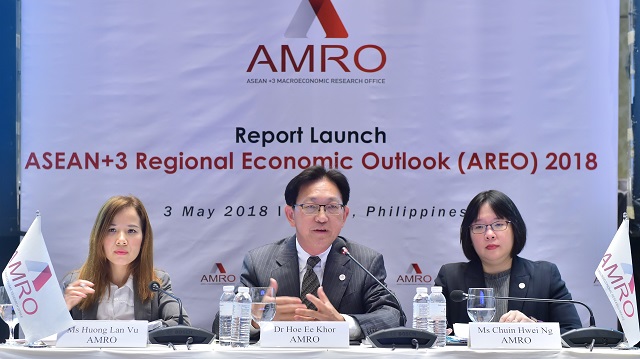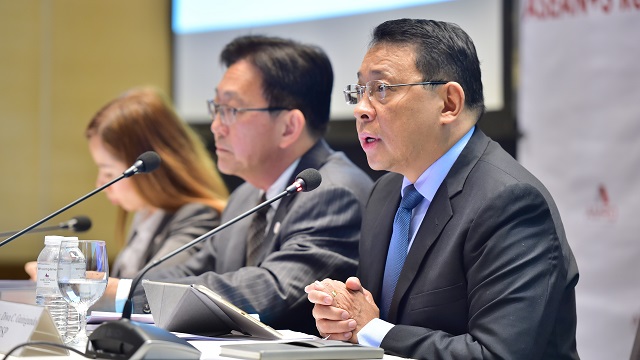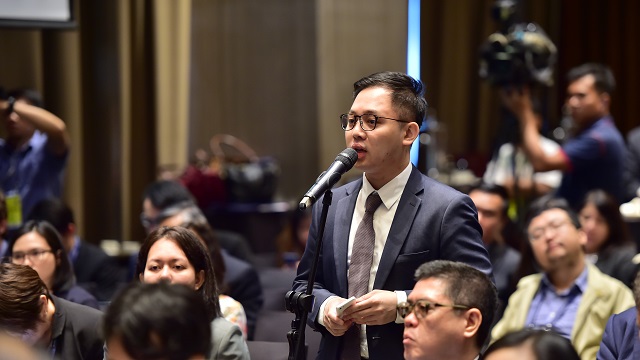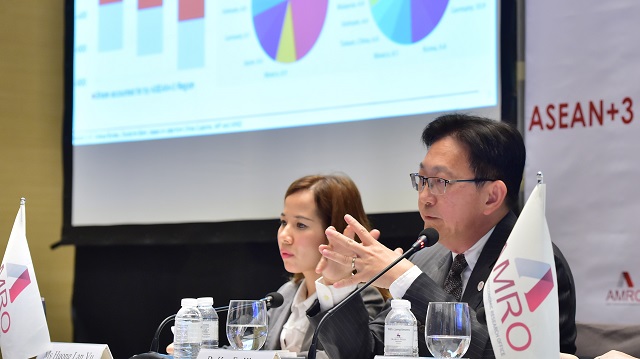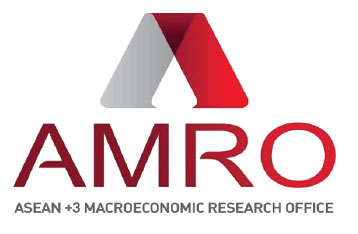Launch of the ASEAN+3 Regional Economic Outlook 2018
Launch of the ASEAN+3 Regional Economic Outlook 2018
Thursday, May 3, 2018, 09:00AM – 10:00AM
Contact: enquiry@amro-asia.org
Location: Ballroom A, Marco Polo Ortigas Manila Hotel, Manila, the Philippines
Boosted by favorable global conditions in 2018, the economic outlook has improved across the ASEAN+3 economies. At the same time, the region has to remain vigilant given the significant external risks in the near term of trade protectionism and a faster-than-expected tightening in global financial conditions. In the longer term, structural trends in regional production and trade networks and technology are prompting policymakers in the region to relook at appropriate policies to secure growth and development in future.
In this context, the ASEAN+3 Regional Economic Outlook (AREO) 2018 produced by the ASEAN+3 Macroeconomic Research Office (AMRO) discusses the economic prospects for the 10 members of the Association of Southeast Asian Nations, and China, Hong Kong, China, Japan and Korea, and a thematic study on “Resilience and Growth in a Changing World”.
How do global value chains, changes in technologies and services, and the benefits of regional integration affect the region’s “manufacturing for exports” strategy, which has brought much success in lifting growth over the past few decades? How should the region weather protectionism and disruptions from technology? What are policy recommendations to support continued resilience and growth?
These questions and more will be discussed by AMRO Chief Economist Dr Hoe Ee Khor and Lead Specialist Ms Chuin Hwei Ng at the AREO 2018 launch on May 3, 2018 in Manila, the Philippines.
The event is open to the media.
Program
Speakers
Mr Diwa C. Guinigundo
Mr. Guinigundo is the deputy governor for the Monetary Stability Sector, Bangko Sentral ng Pilipinas (BSP), since 2005. He has been serving the BSP for 40 years. Previously, he was assistant governor for monetary policy and international operations. In 2001–2003, he was alternate executive director at the International Monetary Fund in Washington DC. Since 2000, Mr. Guinigundo has co-chaired with Bank Negara Malaysia the SEACEN Experts Group on Capital Flows, and in 2010–2013 and 2016–2018, the ASEAN Senior Level Committee on Financial Integration.
Dr. Hoe Ee Khor
Dr. Khor is the Chief Economist of AMRO responsible for overseeing and developing the work on macroeconomic and financial market surveillance on East Asia and on the member economies in the region. He is also a member of the senior management team responsible for setting the strategic direction and management of AMRO. Prior to joining AMRO, Dr. Khor was a Deputy Director of the Asia and Pacific Department (APD) at the International Monetary Fund (IMF), responsible for overseeing the surveillance work on six ASEAN and twelve Pacific Island countries. Dr. Khor started his career as an economist at the IMF in 1981 and had worked on a wide range of economies in the Western Hemisphere and Asia and Pacific departments. He was the IMF Deputy Resident Representative in China from 1991-1993. From 2009-2010, Dr. Khor was Head of Economic Development and Chief Economist at the Abu Dhabi Council for Economic Development (ADCED). Dr. Khor joined the Monetary Authority of Singapore (MAS) in July 1996 and was Assistant Managing Director from 2001 to 2009 where he was responsible for economic research, monetary policy, macro-financial surveillance, and international relations. Dr. Khor obtained his Bachelor’s Degree in Economics/ Mathematics from the University of Rochester and a Ph.D. in Economics from Princeton University.
Ms. Chuin Hwei Ng
Ms. Chuin Hwei Ng heads the Regional team in the Surveillance Group, responsible for regional financial and macroeconomic surveillance of ASEAN+3 economies including developing AMRO’s annual regional surveillance publication. The team also supports AMRO’s country desk economists in financial surveillance of ASEAN+3 economies. Prior to joining AMRO in 2014, Ms. Ng served in the Monetary Authority of Singapore (MAS) in diverse central banking functions for 20 years. Her last position with MAS was Director in the Prudential Policy Department, responsible for banking regulatory policy including prudential limits, policies on housing and unsecured credit, and deposit insurance. She also served as a bank supervisor leading a team supervising foreign banks in Singapore from 2004 to 2008 and in international relations handling ASEAN and Financial Action Task Force (FATF) issues from 2001 to 2003, and as an economist conducting surveillance on China and ASEAN from 1994 to 1999. Ms. Ng holds a B.A. (summa cum laude) in Economics from Yale University, and a Master in Public Policy from the John F. Kennedy School of Government in the USA.
Photos
